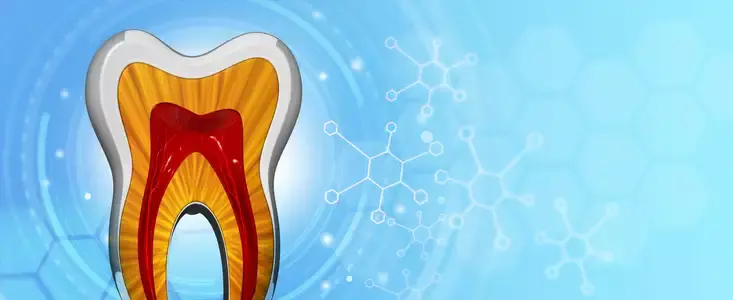After months or years of wearing braces, your smile is finally picture-perfect. You’ve invested a lot of time and money to make your teeth straight, and it was worth it–you love your reflection! But without wearing a retainer, you risk watching your teeth shift back into their pre-braces location. Many orthodontists recommend a removable retainer for the top teeth and a fixed or permanent retainer for the lower teeth. Because of their convenience, permanent retainers are a popular choice. We’ll review everything you need to know about fixed retainers to make the best choice for your teeth.
What is a Permanent Retainer?
A fixed or permanent retainer is glued to the back surfaces of your teeth to effectively restrict the movement of your teeth after your braces are removed. Permanent retainers are often preferred over removable retainers because you do not have to take them out and replace them throughout the day. Permanent retainers ensure that your teeth maintain a new, aligned position that not only enhances your smile, but also corrects spacing or crowding problems.
Four Cons to a Permanent Retainer
In some cases, a permanent retainer indicates that your orthodontic issue is unresolved even after your braces are removed. If the cause of misalignment is correctly addressed, there should be no need for a permanent retainer. While they are convenient, there are some drawbacks to a fixed retainer:
- Diminished Proprioception: Each individual tooth was created to function independently, moving mildly in its respective socket. A permanent retainer bonds multiple teeth together, preventing individual movement and diminishing the proprioceptive property of your teeth.
- Early Bone Loss: Did you know that your teeth subtly move when you chew or clench your teeth? Permanent retainers restrict normal tooth mobility, which leads to a decreased blood supply to the periodontal ligament. Over time, this causes young, healthy people to experience bone loss around the teeth that are secured to a fixed retainer.
- Difficulty in Maintaining Oral Hygiene: It’s not easy to correctly and thoroughly brush and floss your teeth with a metal wire glued to the surface. Flossing around the retainer and in between your teeth requires extra time, patience, and effort. A floss threader is recommended for patients with a permanent retainer to effectively clean your teeth. Regular dental visits are also necessary to protect your teeth from plaque and tartar buildup around the glue and wire of your permanent retainer.
- Replacement Expense: If a fixed or bonded retainer breaks or becomes detached from your teeth, expect to pay an extra fee. The detached end can also hurt your tongue or gums if it’s not addressed quickly.
Four Pros to a Permanent Retainer
Despite the drawbacks, there are several reasons a permanent retainer is a helpful tool:
- Convenience: There’s no need to take your retainer out to eat, drink, give a presentation, or take a picture if you have a permanent retainer. Removable retainers must be worn for a certain number of hours every day, but you won’t have to pay attention to those details if you have a permanent retainer.
- No Speech Interference: There’s no issue with your speech when you have a permanent retainer. In most cases, your speech will be affected if you choose to wear a removable retainer.
- Unnoticeable: With a fixed retainer, you can keep your smile straight without the distraction from wires.
- Reliable: Once a permanent retainer is in, you don’t have to keep track of it. There’s no risk of losing it, which makes it an easy choice for kids and teenagers.
Tips to Effectively Clean Your Permanent Retainer
It will take some time to get used to cleaning your teeth with your permanent retainer, but after a few days of practice, it will become second nature and should not impair your oral hygiene.
- Continue Brushing Regularly: Brush your teeth at least twice a day for two minutes. Make sure the bristles of your toothbrush get around the glue and in between the wire to thoroughly clean the surface of every tooth. You may consider an electric or sonic toothbrush.
- Keep Flossing: Just because it’s a bit more tedious, don’t skip out on flossing your teeth. You may need to use a threader to help get the floss through the gaps in your teeth along the wire. Be gentle as you maneuver the floss on the sides of your teeth so that you don’t harm your gums.
- Schedule a Cleaning: Regular cleanings at your dentist’s office will ensure that your teeth and gums are healthy, especially in the hard-to-reach places associated with your permanent retainer. A dental hygienist can effectively brush, floss, and remove plaque that forms around the bonding. They can also give you more tips and training on how to take care of your teeth and permanent retainer.
To schedule a cleaning and properly maintain your permanent retainer, make an appointment at Atkins and Anderson Dentistry, today.
Share
STAY IN THE LOOP





